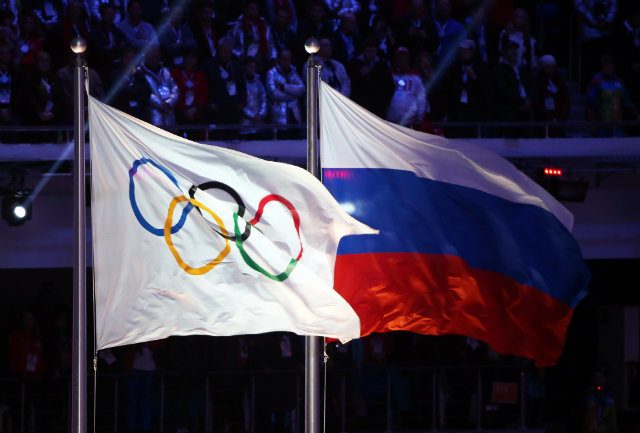SUMMARY
This is AI generated summarization, which may have errors. For context, always refer to the full article.

MOSCOW, Russian Federation – Here is a timeline of Russian doping and corruption scandals after the release on Monday, July 18 (Tuesday, July 19 in Manila) of a report for the World Anti-Doping Agency (WADA) into doping at the 2014 Sochi Olympics and other sports events:
December 2014
German broadcaster ARD airs documentary alleging systematic doping in Russian athletics. A week later, Russian athletics chief and IAAF treasurer Valentin Balakhnichev, and IAAF marketing consultant Pape Massata Diack, son of then-IAAF president Lamine Diack, step down while corruption and doping allegations are investigated by IAAF’s ethics commission. WADA then sets up an independent commission headed by its former chief, Canadian Dick Pound, to investigate the doping claims.
August 2015
ARD airs second documentary with new accusations aimed at Russian and Kenyan athletes based on a leaked IAAF database with details of 12,000 blood tests from 5,000 competitors which revealed “extraordinary” levels of doping. Sebastian Coe is elected to succeed Diack as IAAF president later that same month.
November 2015
French police charge Lamine Diack with corruption on suspicion the 83-year-old Senegalese accepted bribes to cover up doping cases. Diack also charged with money laundering and conspiracy.
WADA’s report into the scandal calls on Russia’s track and field team to be banned from international competition, including from the 2016 Rio Olympics, until “state-sponsored” doping is eradicated.
The IAAF’s 26-strong council subsequently suspends the Russian athletics team. WADA also suspends Russia’s national anti-doping body, RUSADA, over non-compliance.
January 2016
IAAF ethics commission bans for life Balakhnichev and Pape Massata Diack over bribes taken to cover up doping failures by Russian athletes.
WADA’s second report into doping and corruption is published. It says IAAF leaders must have known about the wide scope of doping.
May 2016
The former head of Russia’s anti-doping laboratory, Grigory Rodchenkov, exiled in the United States, describes an organized doping campaign including at least 15 medalists from the 2014 Sochi Winter Olympics, with the close involvement of the sports ministry and the FSB security service.
Three days after calling the claims “absurd,” Russian Sports Minister Vitaly Mutko says he is “ashamed and sorry” over the doping scandal.
June 2016
Fourth ARD program claims that Russian authorities have been covering up for coaches disgraced by the doping program, directly pinpointing Mutko for his alleged involvement in the cover-up.
The IAAF Council unanimously votes to extend the ban on the Russian athletics federation, but offers an Olympic lifeline to athletes training outside the Russian system to compete in Rio as neutrals.
July 2016
Canadian law professor Richard McLaren releases a 96-page report for WADA which outlines rampant Russian state-run doping at the Sochi Olympics and other events.
The investigation finds the FSB secret service helped “the state-dictated failsafe system” carried out by the sports ministry and covering 30 sports.
McLaren’s report says the cover-up started in 2010 after Russia’s “abysmal” results at the Vancouver Winter Olympics and continued until 2015 after the Sochi Games.
As a result, WADA calls for Russia to be banned from the Rio Olympics and urges global sports governing bodies to bar Russia until “culture change” is achieved.
IOC president Thomas Bach describes the revelations as “a shocking and unprecedented attack” on sport. – Rappler.com
Add a comment
How does this make you feel?
There are no comments yet. Add your comment to start the conversation.